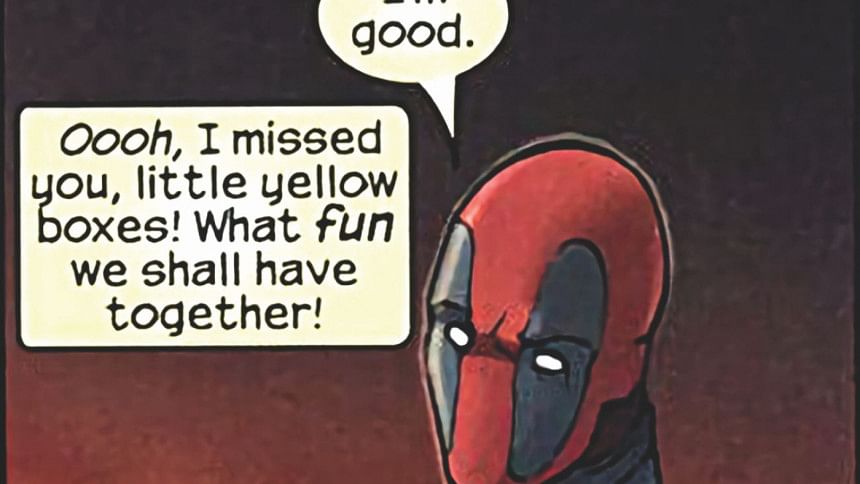THE FOURTH WALL

Video games are a standout amongst the arts for its ways of submerging you in its stories. No other medium succeeds in blurring the line between reality and fiction like video games do. But sometimes the medium breaks the illusion and even intrudes into our realities. This act of intrusion is formally known as breaking the Fourth Wall. This was most famously done in the multiplatform release of Deadpool in 2013. The fourth wall break however, has been around for quite some time and has resulted in many of gaming's best moments and yet this neat trick has been unseen in many modern titles. To understand where it started dying off, we have to go back to the fifth generation when it truly lived.
Back in the early days of the PlayStation, there was a game released on it and it was Metal Gear Solid. For what it's worth, the fight against Psycho Mantis, one of the main antagonists in the game, is an enjoyable fight in and of itself. It was however made even more enjoyable by his "haunting mind-reading powers". He attempts to "read your mind" by listing out games you have on your memory card, forcing your controller to shut off and the only way to fight him is to plug the controller into the second controller port. The moment is eerie and stands out as one of the earliest defining moments of the Metal Gear Solid series. This and Lara Croft's "Don't you think you've seen enough?" are stand out fourth wall breakages for their direct approach and intrusiveness. While Tomb Raider 2 and the way Lara Croft addresses the player directly has become a main stay even today, Metal Gear Solid's ingenious ways have been lost along the way.
Wit doesn't translate into statements, and developers have forgotten that with breaking the fourth wall. A lot of the Easter Eggs that are found in modern video games only come off as witty and fail to leave a lasting impact on the audience. The last great causative fourth wall break however, very similar to Psycho Mantis's antics was found in Batman Arkham Asylum. In one of the later sections of the game the developers decided to flip the switch on the plot with a simple blurry error screen. Although it doesn't call for direct action like the break in Metal Gear Solid, it still caught people off guard and some, if not most, players thought that the game had crashed on them completely. But unlike Arkham Asylum, many modern titles such as Watch Dogs 2, Overwatch, Metal Gear Solid: Ground Zero have all broken the fourth wall but all in the form of Easter Eggs or with some form of fan service.
One reason the fourth wall has not stayed intact in most action and adventure games of today is that developers are always looking for creating ways for explorative learning as opposed to imitative learning which relies on holding the hand of the player. Chris Bateman the author of Beyond Game Design: Nine Steps toward Creating Better Videogames talks about why developers shy away from breaking the fourth wall. He says, "The most interesting thing about these two learning styles (talking about explorative learning and imitative learning) is the word processing packages, they have no place in game tutorials because they require the designer to break the fourth wall." However with how the balance between the casual fan-base as opposed to the hardcore market has tilted towards the casual market, games are now designed to cater to mostly the imitative learner. In this instance, he has this to say, "Although breaking the fourth wall may not be comfortable for the developers, it is important to realise that the imitative learner will never even get to the game if they are not comfortable learning it."

Developers have indeed shied away from the gimmick but indie developers have used it to great effect. The most famous purveyors of this has been Pony Island and already mentioned The Stanley Parable. However, Pony Island truly pushed the limits with going as far as infiltrating your system which is where I will leave it at the risk of spoiling it any further. Both games are incredible for their narrative and are worth experiencing.
Videogames are supposed to take us to magical realms but sometimes convolution of our own realities can have a great effect on us and even heighten our experiences. All of the games mentioned thus far are all worth playing and this includes Spec Ops: The Line, Eternal Darkness: Sanity's Requiem, Undertale and Earthbound for pushing and sometimes breaking the boundaries of the walls that contain us within the virtual realities we snuggle into with gaming.
Asif Ayon's favorite color is a particular shade of ash but he tells everyone that his favorite color is blue. The alliteration in his name bothers him a lot too. To inquire more about what else keeps him up at night, hit him up at [email protected]

 For all latest news, follow The Daily Star's Google News channel.
For all latest news, follow The Daily Star's Google News channel. 



Comments